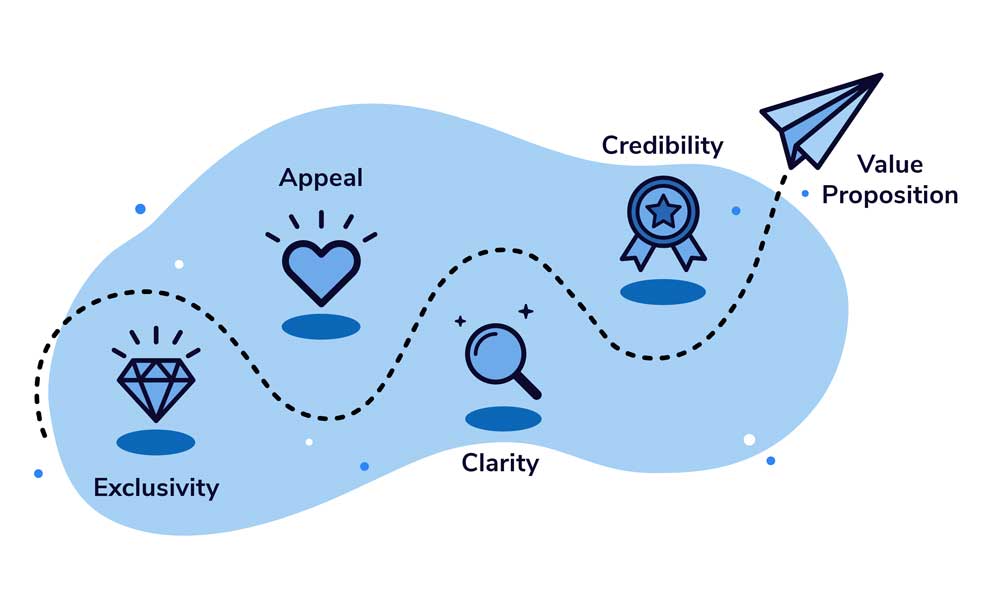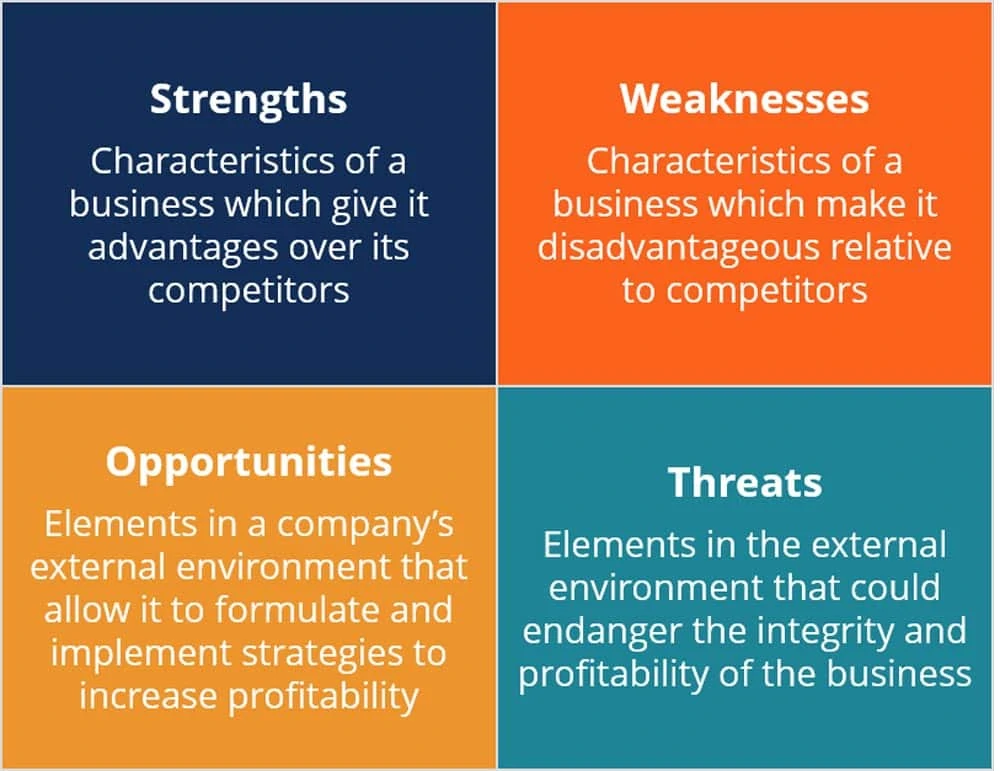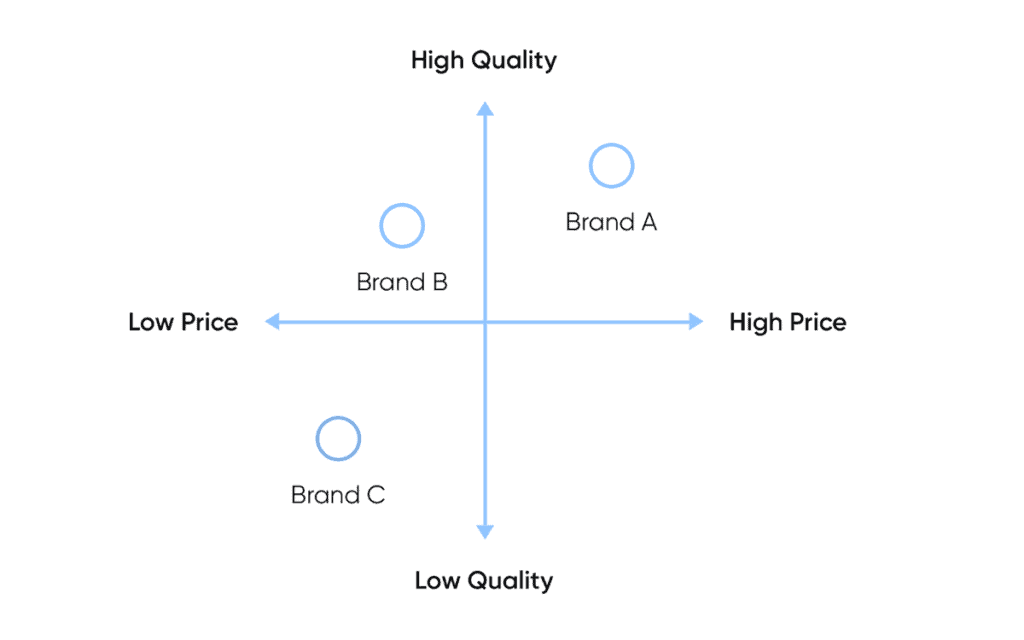How to Brand a Startup from Scratch
Whether you’re trying to create a buzz, build brand awareness, or want to make a name for yourself, the way you brand yourself is essential to your success.
As a startup, brand recognition can make or break your business. The ability to communicate the value proposition of your product/service can be difficult to convey without investing heavily in advertising campaigns. This guide will teach you how to brand a startup from scratch.
You’ll learn to develop your startup’s value proposition using proven marketing strategies, like segmentation, personas, customer journeys, etc.
Whether you’re forming a new startup or building a brand for an existing one, understanding how to effectively brand a startup is key to its success.
Table of Contents
1 – Understand Your Unique Value Proposition

Every company has a value proposition. Their unique combination of a product, price, and target market separate them from the rest of the pack. Value propositions are about the uniqueness of your company.
There is no one else like you! People will buy your product because they want to use it or believe in what you are offering. It would be best to create a great value proposition to help you get more customers.
As a business owner, you’re a walking encyclopedia of knowledge and wisdom on the topic of your business. That means you should be able to help anyone who wants to know anything about your industry or even something entirely outside of it.
However, many entrepreneurs get stuck because they don’t have a plan for how to communicate that value. How can someone agree to pay that price if you can’t explain why you’re worth what you charge? So, before you can explain your unique value position to your customers, you need to understand what that position is yourself.
2 – Set Yourself Apart
When starting your own company, you need to consider many factors to ensure you stand out from the competition. A brand, of course, is at the top of the list.
A strong, cohesive branding strategy that aligns with your business’s core values and vision should be prioritised. This includes brand messaging and design elements.
Startups also need to build their brand in the minds of customers and potential partners. The same customer discovery principles apply here when creating a logo or website.
Startups often don’t get the luxury of time that more prominent companies have regarding branding. Since a startup isn’t typically known for anything yet, branding must be done quickly and with minimal resources.
Startups often stick with the same typeface, colours, and font sizes big, established companies use. But if you need to brand a startup before launching its product, this is a great way to go.
3 – Identify Your Strengths and Weaknesses

To get a clear picture of your strengths and weaknesses, you should look back at your past experiences and results. When you evaluate your results, you will find out what you were good at and where you can improve.
This way, you will be able to determine what you can do to improve yourself and what you can’t. The things you are good at can to help you grow your business and increase your sales.
On the other hand, if you are not good at something, it doesn’t mean that you are a failure. There are many ways to overcome your weaknesses and become successful. One way to do this is to focus on what you are good at and let go of what you aren’t. By doing so, you will be more confident, and you can grow your business efficiently.
To help you identify your weaknesses, consider the following questions:
- What does the industry I am in expect of me?
- Which products or services have I produced and sold successfully in the past?
- What is my track record regarding the success I’ve had in the past?
- How can I put myself in situations where I can be successful?
- What is my network like, and who are the influencers that could help me move up?
- What else do I need to know to do what I want to do better?
- What should I do to move up in the company?
- What should I do to get more opportunities to advance?
- Are there ways I can get access to capital or money for the startup I’m trying to create?
- What is my current revenue source?
- What’s my goal for the business, if not my current goal?
4 – Make it Easy for Customers to Remember You
It’s a good idea to design your website and other marketing materials to make it easy for customers to remember your brand.
It makes sense: Your company’s value proposition is why people should do business with you. Once they do, customers may want to keep in touch or return to your site for more info.
If your company is well known or a big brand, you don’t have to worry about keeping up with all the updates. But if you’re beginning to brand a startup, your brand needs to stick around.
Many businesses try to be brand-oriented. They make sure that their products and services are good so that people think that their products and services are better than others. This is an essential thing for businesses to do.
There is nothing wrong with trying to be brand-oriented. It doesn’t mean that they are dishonest. It means they are doing their best to provide the best service and products.
When customers buy from a brand-oriented company, it shows that the customers trust the company and that the company is reliable.
5 – Create a Consistent Look & Feel

Your brand identity is a set of core values that you want your startup to embody. To achieve a consistent look and feel when you brand a startup, you need to develop a strategy that aligns with your startup values and vision.
While there are countless ways to create a brand identity, I recommend starting with a set of foundational elements that will help define your startup. These can include a logo design, colour palette, typography, messaging, tone of voice, etc. By creating a coherent brand identity, you’ll be able to create a strong visual identity and establish a strong foundation for your startup.
If your startup logo doesn’t look like a startup logo, there’s a good chance it will come off as less credible. You want your startup to be recognisable, but you also want people to instantly think, “That startup looks and feels like it’s been around for years.” Your startup branding has to be consistent throughout every part of your brand: website, social media channels, logo, etc.
6 – Don’t Be Afraid to Be Different
Branding is about knowing who you are and making sure others understand who you are and what you stand for.
But if you’re in business, it’s about being clear about who you are and what you’re all about. And if you are different, you have to be willing to say why and explain how.
You must be comfortable with who you are and what you stand for. If you’re not, your business will never succeed.
I’ve read many articles on how startups should (or shouldn’t) market themselves. I always tell clients to avoid generic taglines, “we’re different” statements, and even the word “startup.”
The only thing startups should be afraid of is “being like everyone else.” The worst thing you can do as a new business owner is to imitate the competition.
You want to avoid imitating others because you have no track record and credibility. So if you’re competing with someone who has years of experience and credibility, it’s only natural to follow their lead. Instead, make sure you’re different, not just because you’re a startup but because you’re unique.
7 – Go Where No Startup Has Gone Before

There are a few things startups are usually missing, which makes them a perfect target for disruption. Here are three reasons why:
- They don’t have a large base of customers yet.
- Their target market is not the largest or most profitable.
- They aren’t a household name yet.
That means that most of the competition isn’t aware of them. This makes it possible for a startup to come in with something new, unique, and beneficial.
Startups should go where no startup has gone before. They should be prepared to do the things others haven’t even considered.
The founders of Airbnb had no business model; their company was founded on the idea that there was a void in the marketplace for a “super host” model (hotels, villas, etc.). And they created a website where people could book a spare room in someone’s house. And people did it.
But when it came to developing their business plan, they realised that no one else had thought of the idea. So they invented something new. They invented a business model. They figured out how to make money and found a market.
8 – Choose a Logo that Impresses
Startups need to brand themselves from the beginning. When choosing a logo, think about whom you are trying to appeal to and what you want people to associate with you.
The logo you choose should embody your business, reflect your goals, and communicate a message about your company.
For instance, if you are targeting young adults between 18 and 25 years old, consider using a logo that represents them: a retro-style font, bright colours, and a playful theme.
We’ll let you in on a secret: many startups don’t bother thinking about a company logo until they’ve been around for several years. At first, they tend to just put their founders’ names on the side of a truck, a bus, or a van. That’s a bit odd. Why not have a logo that represents your brand instead?
When it comes to branding a startup, one thing is clear: you need a memorable logo. But not just any logo will do. After all, if your logo doesn’t make people think, “wow, that company is awesome!” or “I’d use that” when they see it, your logo won’t do its job.
The reason is that your logo needs to be an anchor in the minds of consumers, a source of identity, and a way to communicate the unique message of your startup in one cohesive image.
9 – Build A Brand Strategy & Marketing Plan

Startups are hard work. There are many tasks involved with starting a new business. Your startup requires much time, effort, and money to make it successful.
You have to make sure that your startup has a good foundation before you begin. You need to have the right people who will help you develop your startup so that it can grow and expand.
You also have to make sure that your startup will succeed in the market, which requires a marketing plan. Your startup will fail without a solid foundation and an effective marketing plan.
Your startup needs a robust and consistent brand identity. It also needs to be positioned in the marketplace. It would help if you were clear about what your startup does, what your customers want, and who your target market is.
Your startup also needs a clear set of values that you live by. Your startup needs a marketing plan that will bring in more customers and increase your sales.
You also need to make sure that you have a talented team. You need to train and educate them. It would be best if you focused on developing their skills, talents, and abilities so that they can continue to build your startup. It would be best if you found ways to motivate them and encourage them to achieve their goals. A motivated and enthusiastic team is a recipe for success.
It’s not as complicated as it seems, but you can’t afford to forget this.
If you’re going to create a startup brand strategy and marketing plan, you need to consider your short-term and long-term goals, how you’ll get there, and what steps you need to take to execute your vision.
This process doesn’t happen overnight; instead, you should start by planning over several months or even years.
10 – Set Your Timeline & Plan for Growth
You can start planning for growth in your business when you first open it. It would be best if you considered expanding before you grow too big. It would help if you did this because you can grow in a way that benefits you and your employees.
It’s also good to plan for growth because you will be able to create more opportunities for yourself and your employees. As your business grows, buying new equipment or hiring new workers becomes more expensive.
This means you have to raise your prices to cover these costs. If you were to wait until your business grew so much that it was unmanageable, it would be too late to expand and increase your profits.
This is a common problem that many people face in their business. We tend to get carried away by our ideas and then lose track of our timeline and goals.
You need to keep your eye on the ball, and if your goals start to drift, you may find that your momentum slows, and you have no idea where you’re headed.
Once you’ve figured out your timeline, you should always know how many customers you plan to get in the next month, next year, and even five years. It’s essential always to be working toward a target and not be afraid to look at your plans and adjust them accordingly if they’re not moving in the direction you’d like.
Conclusion
There are many ways to brand a startup, whether it’s a software product or a service that people use in their daily lives. The key is to find the most authentic way to communicate to your target audience about who you are and why they should care about you.
Start by defining your ideal customer. What are they looking for? Then, determine the value you’ll provide to that person.
Finally, develop a compelling message about your product and how it solves their pain points.
You’ll be off to a great start if you follow these ten steps to brand a startup.
Subscribe to our email list for new insights, tips and resources to help you start a profitable, successful business today.
